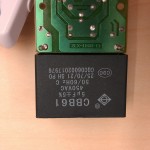[This post is part of a series on my initial Android impressions.]
I think I’ve covered most of the really problematic things Google needs to get on. Some other issues are either already being fixed – they’re apparently already working on the notification shittyness – or unsolved problems for developers – like the fact that landscape mode is a definite second-class citizen, despite a profusion of landscape keyboard sliders.
And now a change of pace for the end of the week: this post is about something I think the Android designers did right, and certainly did better than many competing platforms.
Mobile platforms are especially guilty of treating otherwise indistinguishable objects as different. For years there has been the ringtone scam, with carriers and third party assholes charging for suitably down-sampled and/or converted music tracks, even when it is often visible that devices internally use .mid or .mp3 tracks for the function. Likewise, a couple of the mobile platforms distinguish between editable and non-editable text, which is absurd.
Android doesn’t pull that shit. Music is any compatible audio file the indexer can find. Ringtones are any native audio file that you point at as a ringtone, with a default /sdcard/Media/Audio/Ringtones directory for things you intend to use that way. Notification sounds are likewise audio files you point at as notification sounds, with a default /sdcard/Media/Audio/Notifications folder.
Text, with the occasionally irritating but entirely understandable exception of certain UI elements, is text. The same (clunky) select/copy mechanism works on all text, and it all goes to the same system-wide clipboard. Because I have a Sense ROM, the mechanism is actually this one(video), which is slightly less clunky than the default, but still inelegant. The important thing is that it’s consistent.
All in all, I like my MT4GS. It has some quirks, many of them in software which can and will likely be fixed with updates or third party extensions as time passes, and it costs a fortune to feed, but it does the vast majority of things I want in a little handheld computer, and it does them more elegantly than the competitors I’ve tried. I may not find Android to be an exciting platform, but it is a solid platform, with multiple, reliable companies backing it, a parent company actively trying to improve it, and enough market penetration to be a first-class citizen for years to come. It even appears the native code situation is improving, which should let me work around many of the things *I* would like to work differently that aren’t concerns for most users.





